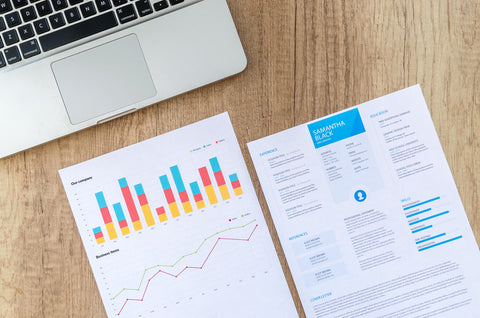
I had my first Overuse Injury in college when I began experiencing pain in my right wrist and thumb. Maybe it was tendonitis but to be honest, I’m not certain because I never saw a doctor. I took two months off from playing to rest and learned I’d been holding the bow the wrong way. So I retrained my bow hold, activated muscles in my upper arm and the problem was solved.
My second injury however wasn’t a “fix the incorrect usage” kind of problem. It was a minor pain that began at age 22 and grew into a massive pain that had me flat on my back in muscle spasms at age 26. There was no “do something differently” option here. There was only "learn how to prevent and manage" and that came with missed rehearsals and gigs and physical therapy visits for eight months. This is, unfortunately, the category of injury that roughly half of musicians will fall into.
According to a 2019 study of 50 professional orchestral musicians, “Overuse Syndrome is the most reported diagnosis among instrumental musicians suffering from playing related musculoskeletal injuries." The study also found that 81.8% of these musicians had a perception of high demand associated with their profession.
The high demand mindset of the musician can often prevent us from accepting or acknowledging pain and seeking treatment. We’ve conditioned ourselves to believe that if we experience pain we can’t stand up to the demands of our field and it somehow makes us less.
Unfortunately, musicians are often slow to put in the work needed outside of the practice room that will aid us in coping with or managing these pains. Until our music educators are able to connect us to coaches and training techniques apart from our instrument that will benefit us holistically, musicians will continue to struggle through overuse injuries.
So let’s get ourselves some education!
In medical terms an Overuse Injury, Repetitive strain injury or a Cumulative Trauma Disorder, is defined as “an injury that occurs from tissue damage resulting from repetitive demand over a period of time.”
Most Overuse Injuries are traced back to two root causes:
- Ramping up engagement in an activity too quickly or
- Engaging in an activity for too long without giving adequate time for rest and recovery
Although an overuse injury can happen to anyone, you may be more prone to one if you have a pre-existing condition. Sizing yourself to the proper instrument and using the correct gear can go a long way in preventing unnecessary cumulative trauma.
If you’ve taken some time off from playing, either from injury or, imagine it, for vacation, or for any other reason, pace yourself as you return to your instrument! Going from 30 minutes of practice every few days to a five hour day packed with practice, rehearsals and gigs will do you more harm than good. Health professionals recommend ramping up activity engagement by 10% per week.
Keep yourself strong and in shape by cross training. There’s been a lot of research done over the last few years about single-sport athletes and higher rates of injury. Colleges and professional sports leagues are now less likely to recruit student athletes who grew up with a single-sport focus because of their likelihood of early onset overuse injuries. Have you ever heard it said that a musician should stop splitting their focus and practice time between two instruments to become better on just one?
In fact, we’re now playing and injuring ourselves so often that we actually have an acronym all to ourselves now. PRMI’s or Playing Related Musculoskeletal Injuries.
These injuries are chronic issues that started as small aches or pains that we played straight through.
It’s also important to remember that all of these repetitive issues, no matter what name we apply to them, are injuries that are occurring in the soft tissues of our body over an extended period of time. Since the root of the injury is slow to develop before turning into a massive problem, we can do ourselves a great service by treating the small aches as they occur.
Here’s a helpful and gluten-free way to treat soft tissue aches and pains:
RICE
R
Rest. If you have a small pain, set down the instrument. Don’t practice through it. If you need to keep working on something, take the music over to the sofa and employ visualization while you:
I
Ice. A cold pack is going to provide temporary pain relief by limiting the swelling and blood flow to the inflamed area. Make sure you’re not applying the ice directly to the skin. Wrap the pack in a towel and leave it on for 15-20 minutes. Follow it up with:
C
Compression. Is also effective at reducing inflammation. Wrap a bandage or invest in a compression sleeve or glove. Lastly:
E
Elevation. Elevate the injury above your heart when possible. This helps control the blood flow and reduce swelling.
Overuse injuries are inflammation based injuries and RICE will help you to reduce and repair.
Lastly, familiarize yourself with the Four Stages of an Overuse Injury before your doctor has to do it for you.
- Pain in the affected area after physical activity
- Pain during physical activity, not restricting performance
- Pain during physical activity, restricting performance
- Chronic, persistent pain, even at rest
The further down that list you are, the longer your recovery time. Pain is your body's way of sounding an alarm that something is wrong so catch small issues early to avoid chronic problems later. It’s also the best way to have a career of less pain and more music.
For some wise words on maintaining a busy rehearsal and performance schedule while avoiding injury, check out our podcast interview with Ingrid Chun, member of the Los Angeles Philharmonic Second Violin Section and make sure you're following us on Instagram for daily updates.







